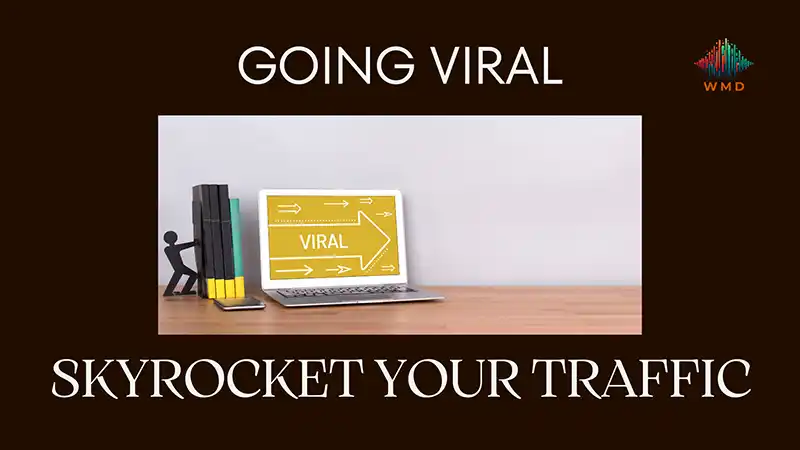Creating viral content isn’t just a bonus—it’s essential for your website’s growth. Viral content strategies are key to skyrocketing your site’s traffic, not just for a short burst, but in a way that sustains your online presence. Understanding these strategies can transform how your content performs, making the difference between obscurity and widespread recognition.
Understanding Viral Content Strategies
What is Viral Content?
Viral content is media that spreads rapidly across the internet, reaching vast audiences quickly. Whether it’s a blog post, video, meme, or social media post, the goal is to create something so compelling that it’s shared widely. The pillars of viral content are shareability, emotional resonance, and precise timing.
Why Viral Content Strategies Matter
Creating viral content isn’t just about a temporary traffic spike. When done correctly, it can improve your search engine rankings and bolster your credibility in your industry. Viral content has the power to transform your website from a hidden gem to a widely recognized resource.
Key Elements of Viral Content
- Emotional Appeal
Content that stirs strong emotions—be it joy, surprise, or even anger—is more likely to be shared. The emotional impact of your content is a crucial factor in its virality. - Relatability
Content that people can relate to, that taps into shared experiences or cultural moments, has a higher chance of going viral. By connecting with your audience on a personal level, you increase the likelihood of your content being shared. - Engaging Storytelling
Storytelling is a powerful tool in content creation. A well-crafted story can captivate your audience, making them more likely to share it. Whether through personal anecdotes or case studies, the key is to keep the story engaging and relevant. - Visual Appeal
In the digital age, visuals are everything. High-quality images, videos, and infographics make your content more engaging and shareable. Visuals not only draw attention but also enhance the overall appeal of your content. - Timing
Timing can make or break your content’s virality. Posting during trending events or aligning with current topics can significantly boost your content’s visibility and shareability.
Strategies to Create Viral Content
- Research and Analyze Trends
Start by identifying current trends in your industry using tools like Google Trends and BuzzSumo. Understanding what’s resonating with audiences now will help you create content that’s timely and relevant. - Leverage Influencers
Influencers have the power to amplify your content’s reach. Partnering with influencers in your niche can expose your content to a broader audience, increasing the likelihood of it going viral. - Optimize for SEO
While your primary goal is shareability, optimizing your content for SEO ensures it reaches the right people. Use relevant keywords, meta descriptions, and tags to enhance your content’s visibility on search engines. - Encourage User Participation
Interactive content, like polls or challenges, encourages users to engage with and share your content. This type of participation is crucial for boosting your content’s reach. - Utilize Social Media
Social media is the heartbeat of viral content. Share your content across all relevant platforms and encourage your followers to do the same. Consider using paid promotions to increase its visibility.
Measuring the Success of Your Viral Content Strategies
- Track Traffic Sources
Use tools like Google Analytics to monitor where your traffic is coming from. This will help you understand which platforms are driving the most engagement and adjust your strategy accordingly. - Analyze Social Media Metrics
Social media metrics—such as shares, likes, and comments—are key indicators of how well your content is performing. Regularly analyzing these metrics can help you gauge the viral potential of your content. - Monitor SEO Performance
Check how your content ranks for targeted keywords. Higher rankings not only indicate that your content is being recognized by search engines but also contribute to sustained organic traffic. - Evaluate Engagement Rates
High engagement rates—like time spent on the page, low bounce rates, and deep scroll—are signs that your content resonates with your audience. These metrics are vital for understanding the impact of your content.
Conclusion
Creating viral content strategies isn’t a matter of luck; it’s about knowing your audience, tapping into their emotions, and executing a well-thought-out strategy. By focusing on these elements, you can create content that not only goes viral but also drives long-term traffic to your website.
Ready to take your content strategy to the next level? Sign up for our newsletter or reach out to WMD for personalized content strategies that work.
References
- Fishkin, R. (2014, June 10). The science of viral content. Moz. https://moz.com/blog/the-science-of-viral-content
- Lindsay, C. (2020, July 15). 21 real-life examples of engaging, shareable content. HubSpot. https://blog.hubspot.com/marketing/viral-content-examples
To Learn More:
Virtual Reality in Media: Transforming Storytelling and Interactive Experiences
5 Revolutionary Impacts of AI-Powered Creativity on Art and Literature
The Rise of AI in Media Production: Revolutionizing Content Creation
FAQs
- What makes content go viral?
Content goes viral when it resonates emotionally, is highly relatable, and is shared widely across platforms, often due to strategic timing and engaging visuals. - How can I create content that resonates with a broad audience?
To create relatable content, focus on universal experiences and current cultural trends that your audience can easily connect with. - What tools can I use to track the success of my viral content?
Tools like Google Analytics for traffic sources, and social media platforms’ built-in analytics for engagement metrics, are essential. - How do influencers help in making content go viral?
Influencers can significantly expand your content’s reach by sharing it with their large, engaged audiences. - Is SEO important for viral content?
Yes, optimizing for SEO ensures that your content reaches a broader audience through search engines, complementing its shareability.





